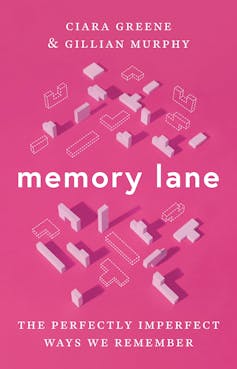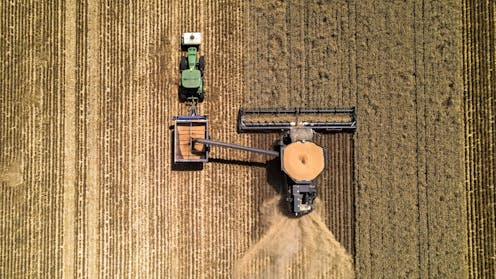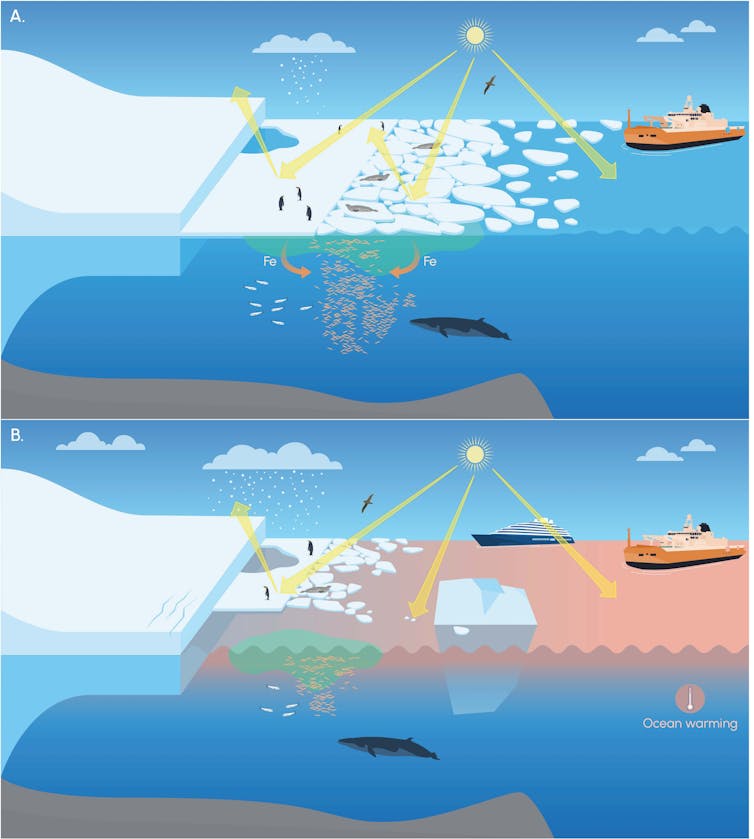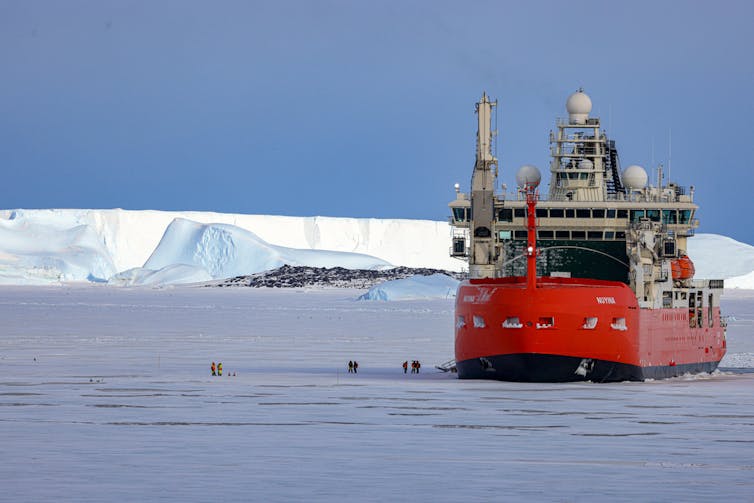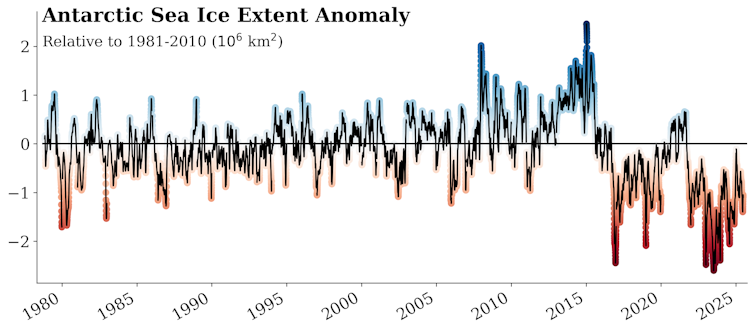Source: The Conversation – France in French (2) – By Olivia Chevalier, Ingénieur de recherche, Institut Mines-Télécom Business School
L’intelligence artificielle, aussi fascinante qu’elle puisse être, se cantonne largement au monde numérique. En d’autres termes, elle ne modèle pas directement la réalité physique. À moins d’être embarquée dans un objet capable d’agir sur le monde… comme un robot par exemple.
Des roboticiens et chercheurs en sciences sociales nous expliquent comment l’avènement de l’IA permet de changer la manière de penser les robots. En particulier, en leur permettant de mieux percevoir et d’interagir avec leur environnement.
En quelques décennies, les nouvelles méthodes informatiques regroupées sous l’appellation d’« intelligence artificielle » ont révolutionné le traitement automatisé de l’information. Certaines de ces méthodes s’inspirent du fonctionnement du cerveau, en reproduisant son architecture en réseau de neurones et les processus cognitifs humains tels que l’apprentissage.
En robotique, l’utilisation de telles approches laisse espérer des progrès rapides dans l’autonomisation des robots humanoïdes. L’essor de la vision par ordinateur, reposant sur ces nouvelles architectures de réseaux de neurones, a, par exemple, permis d’améliorer considérablement l’interaction des robots avec leur environnement, notamment pour éviter les obstacles et pour manipuler des objets. Néanmoins, une limite demeure aux avancées de l’IA en robotique : les robots humanoïdes peinent encore à atteindre la fluidité et la précision des mouvements humains, notamment en ce qui concerne la bipédie et la préhension.
En effet, la coordination des fonctions motrices nécessaires au mouvement ne se résume pas à une simple planification mécanique, comparable à une succession de coups dans une partie d’échecs. En réalité, le mouvement humain et, plus largement, le mouvement animal reposent sur un enchevêtrement complexe d’opérations et d’interactions impliquant des composantes internes à l’individu, telles que le contrôle moteur (l’équivalent de l’IA chez le robot), le système sensoriel ou la biomécanique, ainsi que des composantes externes, comme les interactions physiques avec l’environnement.
Par exemple, un joggeur amateur est capable de maintenir son regard globalement stable malgré les irrégularités du terrain et la fatigue, en tirant parti de propriétés passives du corps humain (de l’articulation plantaire au mouvement des hanches), de réflexes, ainsi que d’un contrôle moteur fin des muscles oculaires et cervicaux. Nos systèmes musculosquelettiques et nerveux ont ainsi évolué de manière conjointe pour relever les défis posés par des environnements hétérogènes et imprévisibles.
En comparaison, pour accomplir des tâches qui exigent un ajustement continu entre l’action et son objectif, les robots disposent d’un nombre limité d’actionneurs (en d’autres termes, de moteurs) et plus encore de capteurs.
Dans ce contexte de contraintes matérielles, peut-on réellement espérer que la puissance de calcul des IA et leurs capacités d’apprentissage suffisent à atteindre les performances motrices observées chez les humains et chez les animaux ?
L’approche dite « incarnée » prend justement le contrepied de l’approche purement calculatoire en ne dissociant pas les composantes algorithmiques et physiques du robot. Elle vise au contraire à explorer les synergies possibles entre le corps et le contrôle, entre les mécanismes passifs et actifs, pour qu’une « intelligence motrice » ou « incarnée » émerge aussi de ces interactions. Cet article examine ainsi les limites et perspectives des synergies entre l’intelligence artificielle, le robot et son environnement.
Vers des robots autonomes : deux phases dans l’histoire de la robotique
Rodney Brooks, ancien directeur du laboratoire d’IA au Massachusetts Institute of Technology (MIT), y a dirigé pendant des années un programme de recherche intitulé : « The Cog Project : Building a Humanoid Robot ». Brooks distingue deux phases dans l’histoire de la recherche en robotique. Au cours de la première phase (années 1970-1980), la recherche est fondée sur le fait que le programme du robot contient les données du milieu dans lequel il évolue, ou plutôt où il n’évolue pas. Lors de la seconde phase, à partir des années 1990, la recherche se fonde précisément sur l’interaction avec l’environnement.
Tous les quinze jours, de grands noms, de nouvelles voix, des sujets inédits pour décrypter l’actualité scientifique et mieux comprendre le monde. Abonnez-vous gratuitement dès aujourd’hui !
Ce rapport dynamique à l’environnement permet de voir dans quelle mesure les robots se complexifient et s’auto-organisent, ou s’autonomisent au fil de l’histoire de la recherche en robotique. Comme le dit Brooks, « l’intelligence humanoïde requiert des interactions humanoïdes avec le monde ». Il s’agit par conséquent de développer des programmes capables de se modifier eux-mêmes en fonction des interactions avec l’environnement.
La seconde robotique, ou comment les systèmes d’IA peuvent rendre les robots plus autonomes
Les recherches de la seconde robotique visent donc à développer un « behaviour-based robot » (robot fondé sur un modèle comportemental), dont une des exigences intéresse notre propos : pour que l’action du robot soit proche de la nôtre, on doit entre autres la supposer « non planifiée ».
C’est, précisément, d’abord là que les progrès en IA se révèlent fructueux. Mais dans quelle mesure l’IA peut-elle permettre de réduire le fossé entre les comportements des robots et ceux, extrêmement complexes, qu’on cherche à leur faire reproduire ? Parce que l’IA joue un grand rôle dans la conception des robots, dans la fabrication des matériaux dont ils sont faits et évidemment dans la simulation et la modélisation, elle offre les moyens de cette approche incarnée.
Un des principaux objectifs de cette approche est l’autonomie des robots, c’est-à-dire leur capacité à prendre des décisions et à s’adapter à leur environnement.
Pour mieux comprendre ce point, on peut opposer l’approche physicaliste à celle de l’IA incarnée. Ainsi, l’approche traditionnelle (aussi qualifiée de « physicaliste » ou « objectiviste ») ne donne pas les moyens de savoir si une machine peut sentir ou comprendre, tandis l’approche de l’IA incarnée pose le problème de l’autonomie de la machine en des termes qui permettraient en principe de vérifier cette hypothèse de la possibilité pour une machine de sentir ou comprendre. En effet, en considérant, d’une part, que le tout – le corps – est plus que l’addition des parties (les composants) et, d’autre part, que les phénomènes qui nous intéressent (conscience phénoménale, compréhension, sensation, par exemple) sont le produit émergeant de ce tout immergé dans l’environnement, cette seconde approche offre les moyens de tester cette hypothèse.
La robotique souple (dans sa version bio-inspirée) semble ainsi plus apte que les autres approches robotiques évoquées ci-dessus à se rapprocher de cet objectif de l’approche incarnée. En effet, en s’inspirant des comportements des organismes biologiques et en essayant d’en reproduire certains aspects, elle vise à construire des robots qui s’adaptent au milieu et construisent leur autonomie dans leur interaction avec lui.
Un autre imaginaire du rapport entre humains et machines
Le couplage de la robotique et de l’IA préfigure potentiellement un autre imaginaire du rapport entre humains et machines et de la technique à la nature que celui qui a prévalu à l’ère industrielle.
En effet, dès les années 1940, la théorie cybernétique, avec le concept d’« homéostasie » (autorégulation de l’organisme avec son milieu), aux sources de l’actuelle IA, était déjà une pensée de l’insertion des machines dans le milieu. L’association cybernétique entre capteurs et traitement du signal avait ouvert la voie au rapprochement de l’intelligence machinique (qu’on peut définir brièvement comme intelligence principalement régie par des algorithmes) avec celle des êtres vivants dans le monde naturel. L’autonomie des machines était toutefois toujours pensée sur le modèle de la capacité des organismes vivants à maintenir leurs équilibres internes en résistant aux perturbations de l’environnement, c’est-à-dire en accordant la priorité à tout ce qui permet de réduire ce « désordre » externe.
Les recherches actuelles en robotique semblent infléchir ce rapport en considérant que les perturbations du milieu représentent des potentialités et des ressources propres qui méritent d’être comprises et appréhendées en tant que telles.
Il ne s’agit pas seulement aujourd’hui d’insérer un robot dans un environnement neutre ou déjà connu par lui, mais de faire de cet environnement – imprévisible, souvent inconnu – un composant de son comportement. Ces recherches se concentrent ainsi sur les interactions du corps ou du système mécatronique avec le monde physique – c’est-à-dire avec les forces de contact et les processus de traitement de l’information mis en œuvre dans l’expérience sensible par les êtres vivants.
Soft robotique, robotique molle, bio-inspirée, intelligence incarnée sont des déclinaisons possibles de ces nouvelles approches et révèlent l’importance du rôle joué par l’IA dans l’ouverture de la robotique à d’autres problématiques que celles qui étaient traditionnellement les siennes, en apportant des éclairages ou en levant certains verrous scientifiques.
La nouvelle robotique ne fait donc pas que déboucher sur un renouveau de l’intérêt pour le vivant. Les conceptions de la machine dont elle est porteuse – une machine immergée dans son environnement, qui en dépend profondément – résonnent fortement avec les nouvelles approches du vivant en biologie qui définissent celui-ci principalement à partir de ses interactions. Le nouveau dialogue qui s’instaure entre robotique et biologie contribue ainsi à repenser les frontières qui séparent le vivant du non-vivant.
Dès lors, l’approche incarnée de la robotique pourrait-elle permettre de combler l’écart entre machine et vivant ?
Le projet ANR-19-CE33-0004 est soutenu par l’Agence nationale de la recherche (ANR), qui finance en France la recherche sur projets. L’ANR a pour mission de soutenir et de promouvoir le développement de recherches fondamentales et finalisées dans toutes les disciplines, et de renforcer le dialogue entre science et société. Pour en savoir plus, consultez le site de l’ANR.
![]()
Olivia Chevalier a reçu des financements du PEPR O2R
Gérard Dubey a reçu des financements du PEPR O2R.
Johann Hérault a reçu des financements de ANR (Project-ANR-19-CE33-0004) , du PEPR O2R et de la région Pays de La Loire.
– ref. Robots bio-inspirés : quand l’IA a une prise sur le réel – https://theconversation.com/robots-bio-inspires-quand-lia-a-une-prise-sur-le-reel-257280





